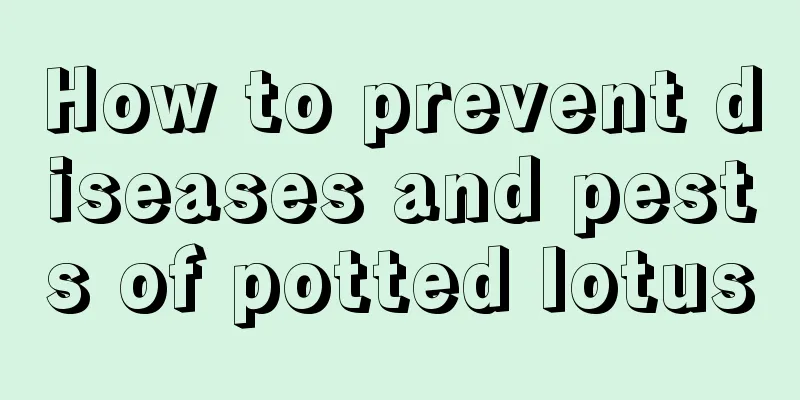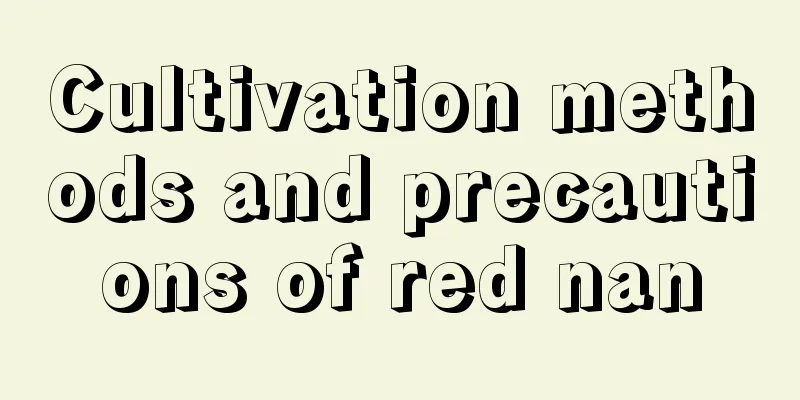How to prevent diseases and pests of potted lotus

Black spotSymptomsWhen the disease first occurs, many irregular brown spots with fine lines will appear on the leaves. As the disease progresses, many black mold-like substances will appear. Often multiple spots link together to form larger patches. When the disease is severe, the entire plant will die. Prevention and treatment methodsOnce brown spots are found, they must be cleaned up promptly and sprayed with carbendazim or thiophanate-methyl solution in time. During the growing season, spray carbendazim appropriately for prevention. RotSymptomsWhen the disease occurs, green spots appear on the edges of the leaves, which gradually connect into one piece and expand inward, gradually turning brown. When the lotus root rots, the center part will turn brown and gradually extend upward, and the nodes and stems will gradually become necrotic. Prevention and treatment methodsSpray carbendazim solution in time for prevention and control. When the disease occurs, spray 3 to 5 times every 3 to 5 days. In other cases, spray once a month for prevention and control. Spodoptera lituraSymptomsThis pest will eat the leaf flesh, leaving the veins and surface, and the leaves will appear grayish white like screen windows. When the larvae grow larger, they not only eat the leaves, but also damage the buds and flowers. June to October every year is the peak period for Spodoptera litura. Prevention and treatment methodsYou can remove diseased leaves manually. If insects are found, scrape or destroy the diseased leaves in time. In areas where larvae gather, spray 1000 times solution of methyl parathion for prevention and control. aphidSymptomsAphids have strong adaptability to the environment and are widely distributed. It mainly harms the stems and leaves of the plant, especially the young branches and buds. Prevention and treatment methodsAphids reproduce strongly and have been found to be difficult to eradicate. Therefore, long-term maintenance is required and regular spraying of pesticides is required for prevention and control. Use diluted DDT emulsion for spraying once a month. When the disease is serious, increase the number of spraying appropriately. |
<<: Butterfly flower disease and insect pest control methods
>>: Control of common diseases and pests of Million Bell
Recommend
Take out a handful of cores from the pillow and throw them into the flowerpot, and the green ivy and spider plant will grow wildly!
A handful of buckwheat husk can grow 10 pots of g...
How to control the flowering period of primroses
Primroses bloom during the Spring Festival If you...
What vegetables are suitable to plant in December?
1. Spinach Spinach is a highly nutritious vegetab...
Can succulents be exposed to the sun?
1. Whether you can get sun exposure Succulent pla...
When is the best time to plant Allium?
Allium grandiflorum is a bulbous plant that bloom...
What kind of orchids are good to grow indoors in the north and how to grow them
1. What kind of orchids are good to grow indoors ...
What to do if the Anthurium flowers turn black and wither
1. Replenish water in time (1) Specific reason: A...
What is the reason for the yellowing of the leaves of the copper coin grass? What should I do if the edges of the copper coin grass turn yellow?
1. Too much light The pennywort cannot be exposed...
When does the coral bloom?
When does the coral bloom? It takes three years f...
These 8 kinds of waterfall flowers can be hung on the wall even without lights, saving you the trouble of curtains!
Green radish waterfall The green ivy is relativel...
When does the red spider lily bloom? When is the right season to plant the red spider lily?
1. What season is it open? Red spider lily usuall...
Is it still called Monstera if it doesn’t open its back? Learn one trick, the leaves will crack into three fingers wide, and the black and shiny ones will suddenly grow to two meters high!
Monstera deliciosa seedlings do not open The root...
How to care for pepperwood
1. Ensure lighting It likes light very much and c...
Does the fortune tree like the sun?
Money tree likes the sun The money tree likes the...
Every family grows "green radish". Experts have summarized 3 tricks to make green radish fill the pot in 30 days
However, growing green radish also requires exper...









